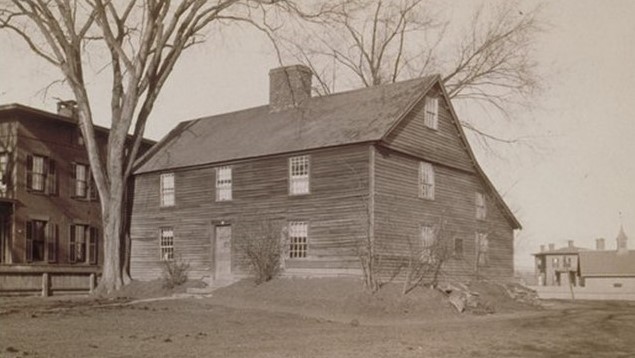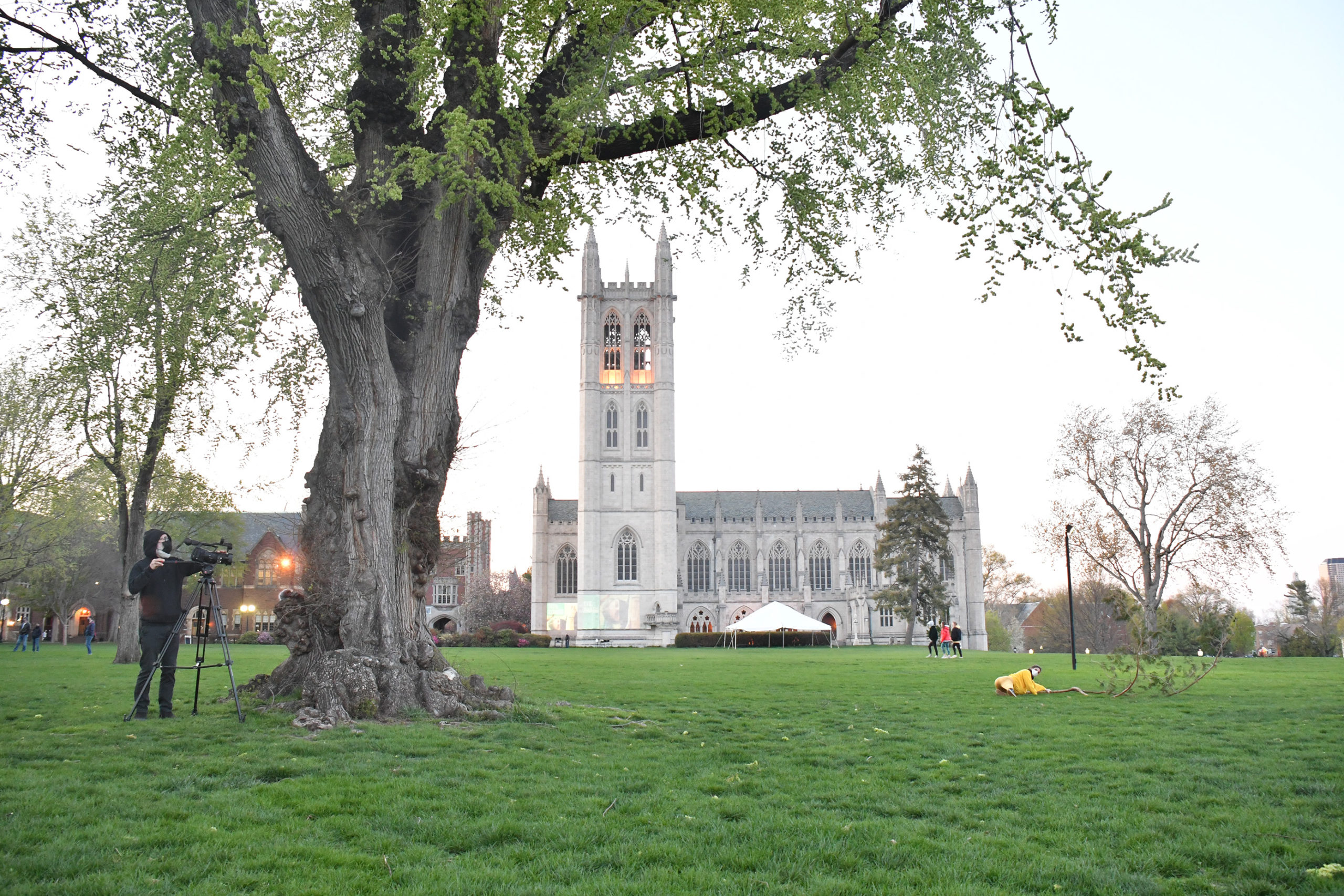
Courtesy Connecticut Historical Society.
“We must answer not only for what we do with purpose, but for the influence we exert insensibly.” —Horace Bushnell, Hartford, 1842
Much has been written about Frederick Law Olmsted’s life, career, accomplishments, and his influence from approximately 1850 on, when he was 28 years old. Much less has been written about Olmsted’s life from his birth in 1822 until his famous trip to England in 1850. Early accounts of Olmsted’s youth are based on his own recollections from later in life when he wrote autobiographical sketches. The most notable are of him in the grass under a tree looking up at his biological mother, riding through a meadow with his father at dusk, his walks with his brother to relatives in Cheshire and Collinsville, and the Olmsted family outings and vacations in search of the picturesque. While Olmsted’s personal recollections provide important insight into his formative years in Hartford, there is still much to discover and understand.
Unfortunately, few artifacts remain of Olmsted’s youth and his personal accounts are incomplete. To gain a more complete picture of his formative years, my manuscript, Unconscious Influence: Olmsted’s Hartford, explores Olmsted as a cultural product of his native Hartford by unfolding a narrative of a cultural milieu—organized around social reform—that emerged during the first half of the 19th century in Hartford. The reader discovers that Olmsted was raised in and part of a close-knit Evangelical Protestant community of Federalists (later Whigs) of influential social and cultural reformers. Olmsted’s Hartford includes Timothy Dwight, Daniel Wadsworth, Catharine Beecher, Horace Bushnell, Charles Loring Brace, Harriet Beecher Stowe, Jacob Weidenmann, Frederic Church, and others.
I believe the individual who was most influential on Olmsted and the development of Olmsted’s worldview was the Reverend Horace Bushnell. While the influence of Bushnell’s 1842 sermon, Unconscious Influence, on Olmsted is well recognized, this recognition falls short of understanding the profound influence that Bushnell had on Olmsted. By exploring more of Bushnell’s writings in the context of Olmsted’s writings, work, and worldview, a fascinating similarity and influence unfolds, revealing Bushnell as theorist and Olmsted as practitioner: Most notable, Bushnell’s 1854 essay Planning of Cities, later published as City Plans (1864). In City Plans, Bushnell promotes the curvilinear, the avenue, and rejects the spread of the urban road grid beyond the core city—all of which later become part of Olmsted’s suburban designs.
After promoting his view of how our cities should best be planned, Bushnell explains, “there spreads a new modern city, with broad, straight avenues and ample house-lots, fronted with trees, in the manner of a new American city.” Think about that statement, the suburban as the new American city, and study Olmsted’s design of Riverside, Illinois, and it becomes clear that Olmsted’s design of Riverside was conceptually Bushnellian and further perfected in practice by Olmsted. It is also remarkable that Bushnell, as far as I can tell, is the first American to call for a city planning profession. Bushnell explains, “we can have cities for the new age that has come, adapted to its better conditions of use and ornament. So great an advantage ought not to be thrown away. We want therefore a city-planning profession, as truly as an architectural, house-planning profession”(City Plans, in Work and Play, Bushnell 1864).
Unconscious Influence: Olmsted’s Hartford demonstrates that the social-cultural community in which Olmsted was raised influenced who Olmsted would become. Be it the appreciation of the picturesque or the embrace of holy domesticity of Bushnell, Olmsted used and further developed Bushnell’s ideas and spread the Hartford ethos of social reform throughout his career. Bushnell stated that “every new village, town, city, ought to be contrived as a work of art, and prepared for the new age of ornament to come” and Olmsted ushered in the new age of ornament. It is so fitting that Daniel Burnham would later recognize Olmsted as “an artist” whose “brain has wrought and his pen has taught for a half century.”
Horace Bushnell recognized that our nation’s future rested in the generations to come after him—Olmsted was part of this future. With his Puritan roots and the Hartford ethos as his world view, Olmsted carried Bushnell’s torch of prosperity our duty into the future. As a journalist, emancipationist, landscape architect and city planner, Olmsted lived his life in service to his community and country. He worked tirelessly to elevate tastes, to create prosperity—wealth and well-being—and to forward our experiment in constitutional democracy through the creation of a rich civil society.
Olmsted’s worldview was the Hartford ethos, an ethos forged in democracy, self-governance, domesticity, and a civil society. In the words of Hartford’s Reverend Joel Hawes, “No man can well be expected to rise higher than his own standard of excellence. If this be low and faulty, such will be the character that is modelled by it. If this be noble and elevated, such will be the character which is formed under its influence.” Hartford’s native son, Frederick Law Olmsted, had a high standard of excellence and was a man of noble and elevated character—a personal standard of excellence and elevated character that he shared with our nation, leaving a lasting unconscious influence on our American cultural landscape.
About the Author: Don Poland is a human geographer and urban planner who has been studying Hartford and its early suburban history for over a decade. The full manuscript, Unconscious Influence: Olmsted’s Hartford, can be found at the following link: https://portal.ct.gov/-/media/DECD/Historic-Preservation/03_Technical_Assistance_Research/Research/Frederick-Law-Olmsteds-Hartford2020.pdf
Poland will discuss his manuscript on April 23rd at the Isham Terry House in Hartford, Connecticut. For further information, visit https://olmsted200.org/events/frederick-law-olmsteds-200th-a-hartford-memorial/ and https://ctlandmarks.org/properties/isham-terry-house/.











